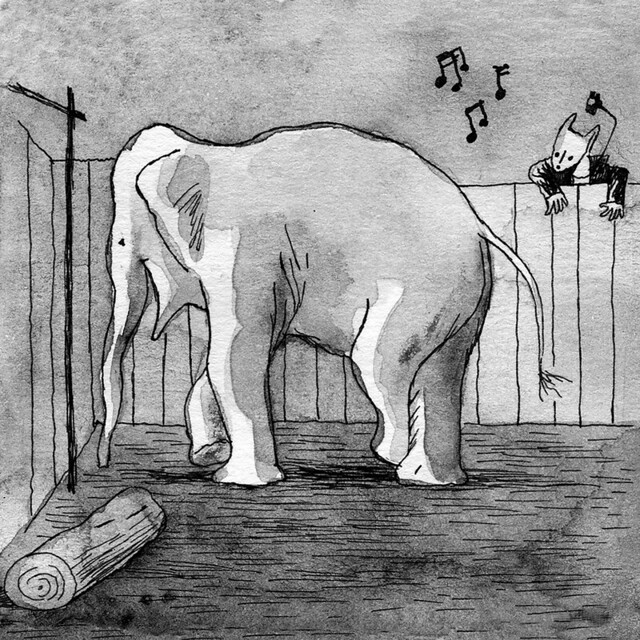 |
by Nick Charney |       |
What I want to do now is pick up on that theme again and tie facelessness to authenticity by leaning on a speech given by Allan Gregg at the 2011 Gordon Osbaldeston Lecture called "On Authenticity - How the Truth Can Restore Faith in Politics and Government". It was a speech that took aim at restoring authenticity to the relationship between elected officials and the public rather than among public servants, but I think that at their core Gregg's arguments apply equally well to how we - public servants - interface with each other.
We crave authenticity
Gregg argues that disdain for authority has replaced deference; that society is increasingly craving authenticity due to the fact that technology allows us exert increasingly greater control over our daily lives; and in so doing has connected us to others in more intimate and immediate ways. The result of which, according to Gregg, is a reduced reliance on traditional authorities, especially those that have not been able to adapt under these conditions:
At one in the same time therefore, technology has disintermediated citizens from traditional authority and allowed us to plug directly into the world and an alternative social network. The by-product of our more distant relationship with authority and our more direct relationship with our peers is that we are now constantly enveloped with the pretext of intimacy and realism. Not only is our ever-more connected and plugged-in citizen confronted with realism in their day-to-day lives, he and she now demands authenticity from their leaders as atonement for the deceit they believe is being perpetuated upon them.
We crave authenticity then because, as individuals, we have become saturated with authenticity in our day-day-lives – we are informed, connected and can respond in real time, at any time. Yet as citizens, we are deprived of authenticity – we feel our leaders do not understand our concerns, share our beliefs and experience or speak a language we understand. In this new environment, truth has become the oxygen and artifice is the kryptonite of public life.
The same thing can be said about what is happening inside the bureaucracy; a similar technological disintermediation is creeping in and creating space between traditional structures of authority (e.g. the classification system, organizational hierarchies, ministerial accountabilities, and the public-private divide) and giving public servants unprecedented access to each other and to the world at large. Today a civil servant's access to information is now only limited by their capacity to engage with others, find and retrieve information and make sense of the context of both the relationships that inform the process and the weight to give to the information retrieved therein (See: Big Data, Social Media and the Long Tail of Public Policy). To force them to work in a command and control system that is in-congruent with an emerging culture that is "enveloped with the pretext of intimacy and realism" simply isn't tenable.
Because authenticity is the glue
... everything I know about public sentiment tells me that authenticity is not only the glue necessary to repair this breach between our citizens and politicians, I actually believe that telling the naked truth, in today’s environment, can be extremely good politics.
If the naked truth is good politics, than fearless advice is good bureaucratics. I've argued previously that fearless advice is actually an inherently low risk activity, and that despite it being low risk, the public service has slowly moved away from it and focused more on loyal implementation (See: On Risk, Fearless Advice, and Loyal Implementation). That said, there is a growing sense - at least among those non-partisan and professional public servants I speak to - that while implementation is important, in the absence of fearless advice it is insufficient.
Both Kent and I have independently made our respective cases for the complexity of the tasks ahead in a general sense (See: Collaboration: Over-hyped and Under-appreciated and The Public Promise of Big Data) but there are a number of specific and pressing public policy issues on the horizon - issues such as healthcare, the environment, immigration/multiculturalism and, yes, the economic policy - that are so complex in their own right that they require thoughtful and prolonged debate and require both making existing systems more efficient but also the introduction of new policy thinking and instruments. This is precisely one of the arguments that Jeffrey Simpson makes in his recent book on Medicare entitled Chronic Condition (the next book to be discussed in our Impossible Conversations Series). I suppose what I am getting here is that thoughtfulness and principled debate requires authenticity and therefore it isn't sufficient for civil servants to simply crave greater authenticity from an amorphous system but rather must take concrete actions to be more authentic themselves and imbue each of their tasks with deep authenticity no matter how trivial the opportunity may seem (See: On Fearless Advice and Loyal Implementation); in other words civil servants must find their faces.
That draws us together and makes us human
Gregg goes at length about a particularly pointed Rex Murphy rant that implored politicians to do a number of things reclaim their authenticity and engage citizens, I've remixed them below so that they address more directly the issue of facelessness and authenticity within the bureaucracy:
- End “gov speak”; stop using language that is intentionally vague, that conceals meaning or motivations, all communication should be more accessible
- Stop using whatever hierarchical authority you have to slow others down or jam a stick in their spokes (see: tall poppy syndrome)
- Tear down the facades of manufactured crisis and importance, abandon process where adherence no longer makes sense given the external environment or where it is demoralizing or dehumanizing
- Speak to others like they are human beings, messy, complicated, exuberant, and intelligent human beings, embrace their complexity and embrace your own humanity.
Or as Gregg puts it:
Throw out the scripts. Talk to the people – really. Decide the three big issues and deal with them at length. End the ads. Stop sounding professionally pious. Speak from the top of your head and the bottom of your heart.
because:
This is not an agenda that calls for complacency, inaction or timorousness. In fact, without bold and innovative ideas to tackle these problems our nation will inevitably drift and then decline, and trust in the public sphere will surely erode even further.
and:
Speaking the truth is not bad politics. We may all have the right to our own opinions but we do not have the right to our own facts. And the idea that you can longer speak the truth with impunity; that government doesn't matter; or that repairing trust in our public figures and institutions is an impossible or unworthy task is just plain wrong. And those who offer these opinions as fact must be challenged.
And it is also wrong for those who are tasked with serving our political leaders to offer anything less than the absolute best advice, based on the best analysis, whether they want to hear it or not.
Which is precisely where you come in.













